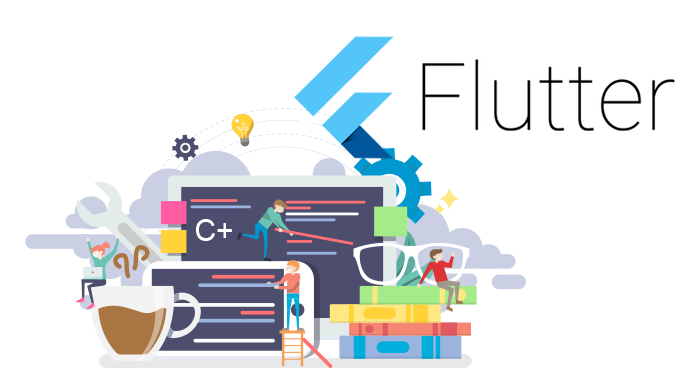This year, mobile applications continued to become more and more popular. Fortunately there are many programming tools available to developers who want to create them. Among these tools there is Flutter, which has distinguished itself lately.
To develop with Flutter, you will use a programming language called Dart. The language was created by Google in October 2011, but it has improved a lot over these past years.
Flutter is a modern framework, and you can feel it! It’s way simpler to create mobile applications with it. If you have used Java, Swift, or React Native, you’ll notice how Flutter is different.
You can learn a lot from Flutter’s documentation, and everything is very detailed with easy examples for basic use cases. Each time I’ve had a problem with one of my widgets in my code, I have been able to check the documentation and the answer was there.
Flutter’s widgets incorporate all critical platform differences such as scrolling, navigation, icons and fonts, and your Flutter code is compiled to native ARM machine code using Dart’s native compilers. Thus Flutter gives you full native performance on both iOS and Android.
Flutter’s hot reload helps you quickly and easily experiment, build UIs, add features, and fix bugs faster. Experience sub-second reload times, without losing state, on emulators, simulators, and hardware for iOS and Android.
Fast Development Paint your app to life in milliseconds with Stateful Hot Reload. Use a rich set of fully-customizable widgets to build native interfaces in minutes. Expressive and Flexible UI Quickly ship features with a focus on native end-user experiences. Layered architecture allows for full customization, which results in incredibly fast rendering and expressive and flexible designs. Native Performance Flutter’s widgets incorporate all critical platform differences such as scrolling, navigation, icons and fonts, and your Flutter code is compiled to native ARM machine code using Dart’s native compilers. Thus Flutter gives you full native performance on both iOS and Android.
Native Performance Flutter’s widgets incorporate all critical platform differences such as scrolling, navigation, icons and fonts, and your Flutter code is compiled to native ARM machine code using Dart’s native compilers. Thus Flutter gives you full native performance on both iOS and Android.
Fast development Flutter’s hot reload helps you quickly and easily experiment, build UIs, add features, and fix bugs faster. Experience sub-second reload times, without losing state, on emulators, simulators, and hardware for iOS and Android.
Any object in Flutter is a widget, from a button to padding or a font. Widgets can be combined to create layouts, and you can choose to use widgets on any level of customization – from existing building blocks to the lowest level when you create your own widgets with the same tools the Flutter team did theirs.
Widgets in Flutter are organized in trees, which is handy for rendering, but may result in an excessive complication of the whole structure. Large applications may require up to 10 layers of code to create a basic object, so you’ll have to plan the structure ahead.
Given that getting used to Dart is not a massive problem to you, learning the tool itself should be easy. The Flutter team notes that they’ve seen people with very limited programming knowledge prototyping and building apps, and also mentions that no mobile development experience is required to start with Flutter.
For such a young technology, Flutter is growing very fast. This graph shows the interest in Flutter on StackOverflow prior to the Release Preview 2 launch in comparison with other front-end frameworks. Despite still being in beta stage, the tool is production-ready which has only piqued the crowd’s interest. It’s available for commercial use and has already been successfully implemented in enterprises, medium-sized agencies, and startups.
Dart is a modern object-oriented language that will remind you of Java or C++ with its syntax. It supports both strong and weak typing styles making it easy to pick up for beginners. Above, we mentioned that Dart is responsible for some of the crucial things about Flutter. Let’s analyze what about Dart’s nature makes Flutter… well, Flutter.
Both AOT and JIT compilation types. In development, engineers usually have to opt for the compilation their programming language provides. Programs compiled Ahead-of-Time usually run faster because they’ve been compiled before. However, in this case, the development itself slows a lot. Just-in-Time compilation results in faster development cycles, but, predictably, affects the app startup speed since the compiler does its analyzing before code execution. Flutter takes the best of both worlds by using JIT compilation during development and switching to AOT for app release.
No need for XML files. In Android development, the work is separated into layout and code. The layout should be written in XML as Views that are then referenced in the Java code. Dart takes care of that by keeping layout and code in one place. Since everything in Flutter is a widget, the layout is also created in Dart.
Better performance without a JavaScript bridge. As you already know, the app on a user’s device will run smoothly because Dart compiles into native code directly, without the bridge.
Reference
Flutter. (2020). Retrieved on January 12, 2020, from https://flutter.dev/.
Frequently Asked Questions | Flutter Interact | Google Developers. (2020). Retrieved on January 12, 2020, from https://developers.google.com/events/flutter-interact/faq.

